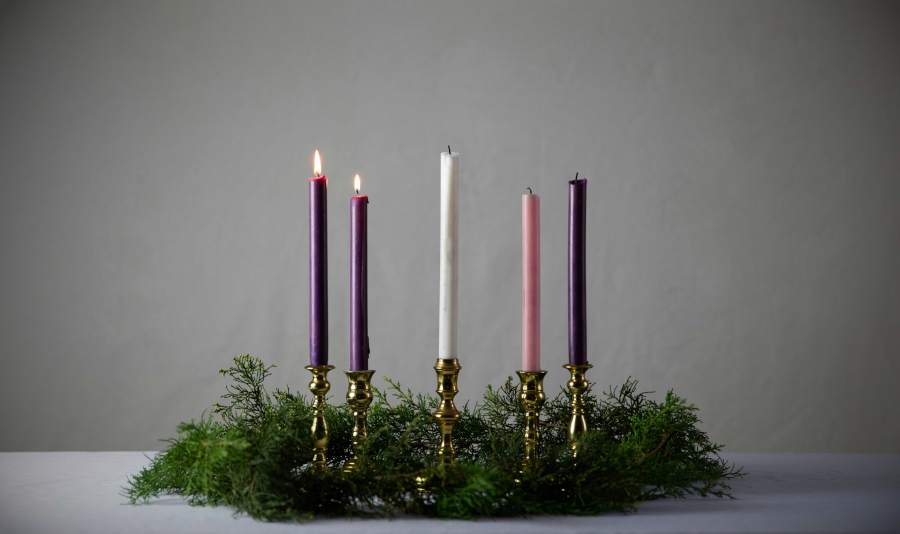Light in the Darkness: A Series for Advent Part Two – Shadows
Image

Read Part 1.
As the darkness gives way to the daylight, we notice long shadows—perhaps moving directly upon us.
Shadows have the capacity to unnerve—even frighten us. Sometimes the shadows may be mistaken for something real. At other times, something real may be hiding in the shadows.
Shadows make us uncomfortable. They represent incompleteness and uncertainty—”variation or shadow of turning” (Js. 1:17).
Shadows create a sense of darkness. In reality, however, the shadows prove the existence of the light—although it is hidden from view.
As the Old Testament saints looked ahead toward the ineffable brilliance of their Messiah’s first coming, they saw enormous signs between it and them, casting shadows back upon them.
There were gigantic figures like Abraham, Isaac, Jacob, Moses, Samuel, David, Isaiah, Jeremiah and Daniel. These men, and others who followed their examples, pointed—albeit in a very finite and limited way—to the coming of the One that God had promised to Adam and Eve in Genesis 3:15, the “Seed” of “the woman.”
There were even theophanies—or Christophanies—appearances of the preincarnate Son of God (see Gen. 18:2, 3, 22; Josh. 5:13-15; Dan. 10:4-9). Such occasions were so mysterious that believers still debate their significance today. Suffice it to say, centuries before He ever “became flesh and dwelt among us” (John 1:14), our gracious King condescended to confront and counsel His creatures, and to meet their every need. Yet, these events were shadowy—hidden in darkness, and full of mystery.
As ancient believers looked for the coming of Christ, their view was blocked by the enormity of the tabernacle and temple systems of worship—complete with all manner of ceremony and sacrifice.
Then, there were also incredible prophetic announcements related to their Messiah. Many of these were deep and difficult to understand. They told of His suffering, but also of His reign. Some were heavily detailed (see Isa. 7:14; Mic. 5:2). But others just left the hearers in wonderment (see Dan. 7:28; 8:27; 10:10-17).
Truly, these Old Testament saints lived and moved in the shadows—foreshadows, if you will, pointing them to Christ, the coming Savior. Unwittingly, they were actually overwhelmed in heavenly glory, though to them all of these wonderful figures seemed to be shrouded in darkness.
Surprisingly, shadows are referenced 58 times in the Old Testament and 7 times in the New Testament.
Two specific New Testament passages use the term shadow in the way that I intend it here. Hebrews 10:1 speaks about “the law, having a shadow of the good things to come, and not the very image of the things.” In other words, the law of Moses was not an end in itself, but pointed toward something greater than it had to offer.
The Apostle Paul also wrote this way in Colossians 2:16-17:
So let no one judge you in food or in drink, or regarding a festival or a new moon or sabbaths, which are a shadow of things to come, but the substance is of Christ.
Thus, shadows are like signs—“the substance of things hoped for, the evidence of things not seen” (Heb. 11:1)—regarding still future events.
Shadows may also be seen at the end of the day, so we, too, can relate to living in the shadows. We live in the light of Christ’s second coming, and its brilliance is so marvelous that it causes us to see shadows of actions still future to us.
Those that lived before the first coming of Christ “were in expectation” (Luke 3:15), waiting for “the fullness of the time” (Gal. 4:4). It is amazing, then, that when Christ finally came to this earth in full view—“the true Light which gives light to every man coming into the world” (John 1:9)—so few embraced Him. Perhaps they had grown so used to darkness and shadows that their eyes could not yet focus in the light.
May we who live in the light of His first coming recognize the glimmers of His second coming.
Scripture taken from the New King James Version®. Copyright © 1982 by Thomas Nelson. Used by permission. All rights reserved.
Paul Scharf 2023 bio
Paul J. Scharf (M.A., M.Div., Faith Baptist Theological Seminary) is a church ministries representative for The Friends of Israel Gospel Ministry, based in Columbus, WI, and serving in the Midwest. For more information on his ministry, visit sermonaudio.com/pscharf or foi.org/scharf, or email [email protected].
- 110 views


Discussion